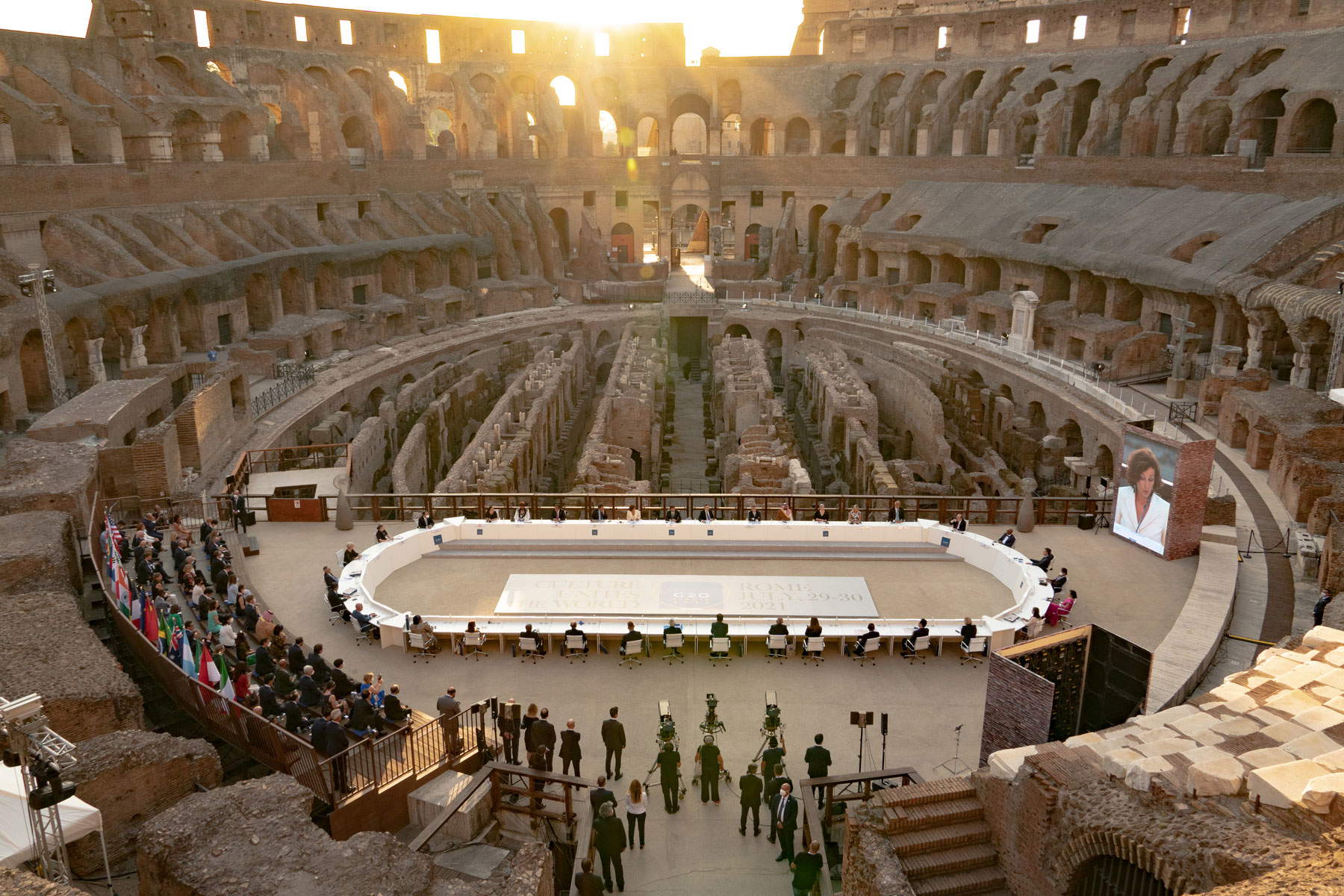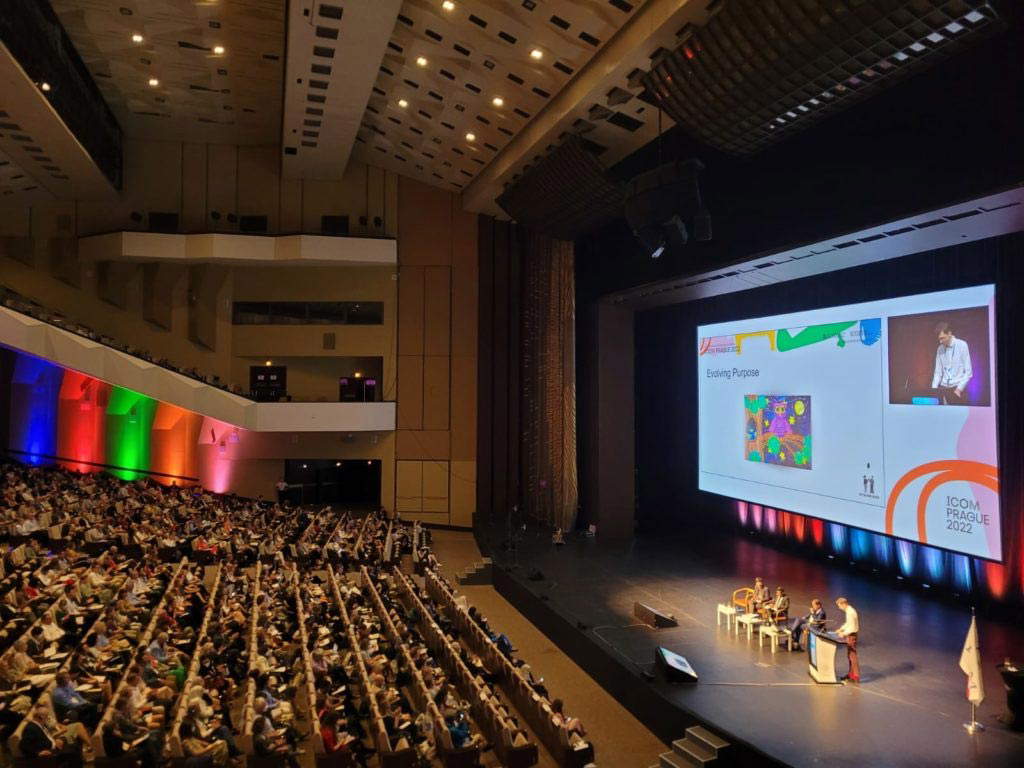How museology has changed from the Faro Convention to the new definition of a museum
We all knew that nothing would ever be the same again, that the pandemic would irreversibly change the scenarios of our existence and our way of life. All of us, or almost all of us, were ready to roll up our sleeves and start again: the most optimistic claimed that we could also take positive things from the drama since, in general, we were experiencing changes economically, socially, culturally and anthropologically. Now, with the benefit of hindsight, we are aware that the contexts in which we live are really very different than in 2019, but above all, the existential patterns of people have changed, who, in addition to having inherited states of inevitable stress and anxiety, have become aware that the past will not be able to recur.
While still occupying a fundamental role, culture has also undergone evolutions, especially with regard to the sustainability, enhancement, and management of tangible and intangible cultural assets and museums. Museum structures, in fact, have changed: They have revised their goals and missions, expanded their functions, given more importance to the study, research, and interpretation of permanent collections and temporary exhibitions, rethought their relations with the territory and with training and educational facilities, gave more importance to intangible and relational aspects, diversified the professional specificities of employees, gave continuity to research and innovation in the digital sphere to improve their performance through the use of functional technology, and changed their business model. The museology of the present, in fact, moves on ethical and responsible designs that can promote diversity and foster, enhance, and implement sustainable growth plans.
In fact, from the fall of 2020 to the summer of 2022, there were four events that reinforced the urgency-need for the change taking place and governed an inevitable international evolution that had its natural culmination in ICOM’s new definition of a museum:
-
On September 23, 2020, the Italian government ratified the Council of Europe Framework Convention on the Value of Cultural Heritage for Society. Actually, Italian specialists had been working for some time on “The right to cultural heritage is inherent in the right to participate in cultural life as defined in the Universal Declaration of Human Rights.” As stated in Article 1 of Part 1: “The preservation of cultural heritage and its sustainable use have as their objective human development and quality of life.” The Faro Convention, which was opened for signature by the member states of the Council of Europe on October 27, 2005 in Faro, Portugal, arose from the confrontation among forty European states on the damage to cultural heritage caused by the then recent conflicts in Europe. The Faro Convention aims to promote a broader understanding of cultural heritage and its relationship to communities, encouraging recognition of the importance of objects and places because of the meanings and uses attributed to them on a cultural and value level. Citizen participation is an indispensable element in raising awareness in Europe of the value of cultural heritage and its contribution to well-being and quality of life. In this context, states are called upon to promote a participatory enhancement process, based on the synergy between public institutions, private citizens, and associations.
-
July 29 and 30, 2021 led to the Rome Declaration of the G20 Culture Ministers, which recognizes, through a document developed in 32 points, the arts and creativity as integral parts of the country’s growth and entrusts museums with new functions: 1) to break down architectural and social barriers; 2) to urge interdisciplinary and intersectoral dialogue among cultural heritage actors to prevent all kinds of “catastrophes” (degradation of cultural property, theft, etc.) and revise museum governance and management, adapting them to people’s new needs; 3) recognize the role of culture in combating climate change, not only by improving the environmental impact of culture-producing facilities, but also by promoting events related to environmental awareness and ecological consciousness; 4) encourage the involvement of the younger generation, stimulating new projects related to new skills 5) encouraging professional upgrades for cultural workers in line with the new goals of museums; 6) urging research and sharing on the use of new technologies aimed at the protection, study, preservation, digitization, promotion and access to cultural heritage; 7) recognizing the importance of cultural, slow and sustainable tourism to affirm the value of culture as a resource for dialogue and mutual understanding among people in the exaltation of diversity and sustainability. The document was vetted by the ministers and delegations of the 20 participating countries together with the heads of the main international organizations active in the field, including UNESCO, OECD, Council of Europe, Union for the Mediterranean, international cultural sector organizations such as ICCROM, ICOM, ICOMOS, the key players in the fight against crimes against cultural heritage such as theUnited Nations anti-crime agency UNODC, Interpol and the customs organization WCO, with direct involvement in the work also of the G20 outreach group targeting the younger generation (Y20).
-
On October 30, 2021 at the conclusion of the conferences “Pleasure Culture. The sustainable growth of museums and theaters. Culture enters people’s everyday life,” conceived and moderated by Maurizio Vanni, held at the Il Maggiore Theater in Verbania, sponsored by the Il Maggiore Event Center Foundation of Verbania and the University of Eastern Piedmont and sponsored by the Ministry of Culture, the Piedmont Region and the City of Verbania - which saw the participation of university professors, professionals in the field, archaeologists, doctors, economists, psychiatrists, philosophers, museum directors, museum education specialists, bioarchitects, technology and nanotechnology experts, etc. -, the “Vademecum of Museology of the Present. Suggestions for the enhancement of structures that produce culture and for an increasingly ethical and sustainable management of museums.”
-
On August 24, 2022, the Extraordinary General Assembly of ICOM - International Council of Museums, in Prague, approved the new definition of museum. This is the Italian translation that will be the subject of discussion with ICOM Define and other National Committees that have Italian as their official language: “A museum is a permanent nonprofit institution serving society, which researches, collects, preserves, interprets and exhibits tangible and intangible heritage. Open to the public, accessible and inclusive, museums promote diversity and sustainability. They operate and communicate ethically and professionally and with community participation, offering diverse experiences for education, enjoyment, reflection and knowledge sharing.” In relation to the previous definition, which dates back to 2007, elements reflecting people’s new demands on culture-producing facilities have been introduced, the functions of museums in relation to key issues such as ethics, inclusivity, community participation, and sustainable growth in its four interconnected levels: economic sustainability, social responsibility, environmental sustainability, and health and well-being.


Already in the first part of the definition, the importance given to the word “research” inserted first does not go unnoticed: a way of enshrining the active and militant role of the museum played not only through publications, but also with temporary exhibitions, innovations related to the use of functional technology, ongoing and interdisciplinary collaborations with universities. Compared to the 2007 definition, in the current one, “collects” appears instead of “acquires,” which is certainly more apt to refer to intangible heritage and intangible assets. Putting the visitor at the center means listening to his or her needs and wants and fostering tailored cultural proposals and offerings related to the common good, enhancing precisely the intangible assets. Also in the first part of the definition, the traditional word “exposes” is anticipated by “interprets.” To interpret, in this case, means to conceive, design and participate in all-round exhibition proposals: both from the point of view of ordering, scientific curating, strategy and communication and from that of cataloguing and creating experiential and emotional proposals. But it is in the second part of the definition that novel terms appear: the words “accessible” and “inclusive” highlight how museums are transformed into businesses that serve people and emphasize a social character because they offer a public service and protect a public interest. Permanently breaking down architectural and social barriers means being able to empower all segments of the public starting with the most fragile and vulnerable people. The museum has never been so close to people and so ready to welcome “diversity” and enhance differences in thought, culture, ethnicity, age, gender, religion, sexual orientation and disability.
The call for ethical behavior, with clear reference to ICOM’s Code of Ethics , highlights how the museum’s main task is to increase its educational role for an ever-increasing audience from all levels of society. Here we also implicitly refer to the social equity that requires museums, in addition to pursuing the traditional functions related to the collection, preservation, interpretation, display and promotion of tangible and intangible assets, to aim at the sharing of psycho-physical well-being for individuals and society. If we want to make culture and museums enter the everyday life of so many people, make them occupy a relevant space in the “leisure market,” we must also think about their health and inner well-being, help them manage stress and states of anxiety (scenarios related to post-pandemic and daily routine), thus improve the quality of social life. A thought also confirmed by the presence of the word “pleasure,” which, in this case, in addition to mental and physical well-being, also refers to “fun in the museum” and relational good. Curiosity, wonder, interaction and discovery: these are the feelings that museums can trigger in all audience segments of all age groups, providing a feeling of distraction and joy.
Even the inclusion of “knowledge sharing” in the new definition of museums is not as predictable as it might seem; in fact, increasing one’s knowledge, also understood as awareness, is of fundamental importance to better live existential paths both as private individuals and as professionals. To make this possible, it is necessary that knowledge, skills, and experiences be shared, made accessible to more and more people and users. Each museum must identify the sharing tools most appropriate to its target audiences.
The reference to “sustainability” was inevitable: the word has not only a symbolic value and does not refer exclusively to environmental sustainability. Over time, in fact, the definition of sustainable development has taken on a more concrete and practical approach that, by focusing on a holistic approach, establishes a link between economic development, social inclusion, environmental sustainability, health and well-being.1 In 2002 in Johannesburg, at the UN World Summit on Sustainable Development, the importance of integrating the three components of sustainable development-economic, social, and environmental-understood as interdependent, mutually supportive pillars-was first discussed2. A vision, that of the three interconnected components, that would be reaffirmed ten years later in Rio de Janeiro at the Rio+20 Summit. The concept of sustainability, therefore, must be approached in its totality: sustainable growth for museums, in the different measurable impacts (economic, social, environmental and holistic), must be contemplated with a medium- to long-term logic and return on investment, not necessarily in terms of turnover. Museums once again become landmarks for an area not only because of their cultural value, but also because they become a kind of socioeconomic seismograph of their performance3.
Notes
1J.D. Sachs, The era of sustainable development, Milan, Bocconi University, Egea, 2014, p. 6.
2WorldSummit on Sustainable Development, Johannesburg, 2002.
3B. Santoro, Thinking Sustainable. A beautiful enterprise, Milan, EGEA, 2018, p. 48.
Warning: the translation into English of the original Italian article was created using automatic tools. We undertake to review all articles, but we do not guarantee the total absence of inaccuracies in the translation due to the program. You can find the original by clicking on the ITA button. If you find any mistake,please contact us.



























